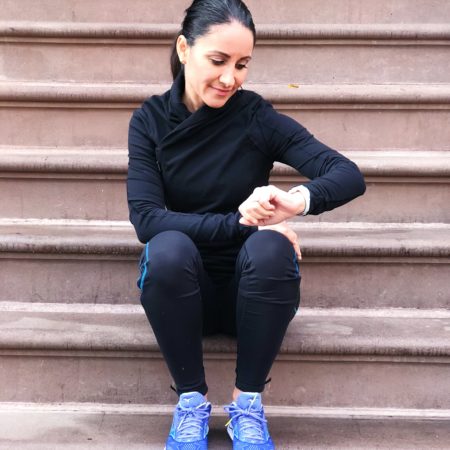If you’re a fitness fanatic, someone who generally likes to exercise or are working toward a health or fitness goal, chances are you like a good sweat session. And I’m guessing that when it comes to your chosen workout, the more intense and sweatier the workout, the better – right? Not necessarily. As a barre instructor, I’d like to say I’m amazed by just how many people think if they don’t sweat in class, they didn’t get a workout, but I used to be guilty of the same mindset. Barre is low impact and because of that, it doesn’t always produce a lot of sweat. However, as someone who has experienced the benefits of regular barre workouts, I know that a workout doesn’t have to be impossibly intense and you don’t have to sweat to get a good workout.
Even on the days you may not feel motivated to hit the gym (hey, we all have them), there’s no denying that once you put in the time, you feel better for it. There’s a reason for that. Exercise gets the oxygen in your blood circulating and releases endorphins to produce feelings of euphoria. As more people adopt fitness as a lifestyle habit and the number of boutique fitness workouts increase, workouts are becoming more intense. In fact, I’ve noticed that the trendiness of a workout often correlates to its perceived intensity. That is, the more you sweat, the more popular the workout.
“No pain, no gain”
We’re all familiar with the old adage, “no pain, no gain,” hence, a widespread misconception that if a workout isn’t intense or fast-paced, it isn’t effective. But, intense, painful workouts can set you up for failure or sideline you with an injury.
A more moderate workout can be as effective as a fast-paced, intense workout. For starters, intense workouts may induce injury especially if you’re new to exercise and unfamiliar with correct form. If this is the case for you, start slow, focus on form and over time you’ll build endurance to handle more intensity or a faster-pace. However, you can absolutely still lose weight and build strength with a low or moderate intensity workout.
Let’s talk about sweat
Sweat is a means of cooling the body. Whenever the core body temperature rises whether you’re exercising or not, the body sweats to lower the temperature and bring your body back to homeostasis. Yet, sweat is often erroneously used to measure a good workout. As if the more sweat-soaked your clothing is, the harder you worked. Everyone craves a good sweat sesh once in awhile and though it can feel good to sweat, sweat simply indicates how much water you lost during your workout and isn’t a valid measure of calories burned. So, no, you don’t have to sweat to get a good workout. If you were to step on a scale right after a sweaty workout and notice weight loss it’s likely a temporary loss of water weight and not fat loss.
Also, keep in mind that everyone sweats differently – at different rates and for different reasons. You and I may take a barre class together and you may sweat straight through your t-shirt while I may not even break a sweat. I see this in my classes often – some students sweat and others don’t regardless of fitness level.
Let’s compare running vs. barre. Running no doubt produces pools of sweat and if I were to track my calorie burn on a 5-mile run I might see numbers averaging in the 500s (this is relative and varies depending on height, weight and a variety of other factors). Compare this to a one-hour barre class where I may not sweat much (this makes barre ideal for post-workout brunch, errands or other obligations like work) and my average calorie burn may be closer to 250 calories for a one-hour class. Which workout would you choose? Most would say the run. But what this comparison doesn’t take into account is after-burn, post-exercise oxygen consumption – the calorie burn you achieve after the workout is over. With a cardio-based workout like running, your after-burn is minimal, meaning what you see on the fitness tracker is what you get. But with strength training workouts like barre, you continue to burn calories throughout the day. So while you burn fewer calories during class, your body keeps burning well after the workout is over.
The bottom line is, you don’t have to sweat to get a good workout. There are many effective workouts that don’t produce a lot of sweat or burn tons of calories so choose workouts that make you sweat and those that don’t, balance high-intensity exercise with low-intensity exercise and above all else, your workout should be safe and feel good for your body.




[…] Keep in mind, you don’t have to sweat to get a good workout. […]